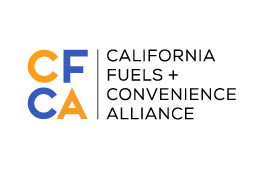
California Fuels and Convenience Alliance
2520 Venture Oaks Way, Suite 100
Sacramento, CA 95833
916.646.5999
January 31, 2024
City of Sacramento
915 I Street
Sacramento, California 95814
Mayor Darrell Steinberg
Council Member Lisa Kaplan
Council Member Karina Talamantes
Council Member Katie Valenzuela
Council Member Caity Maple
Council Member Eric Guerra
Council Member Rick Jennings
Council Member Mai Vang
RE: 2040 GENERAL PLAN UPDATE – BANNING NEW AND EXPANDED GAS STATION USES
The California Fuels and Convenience Alliance (CFCA) represents about 300 members, including nearly 90% of all the independent petroleum marketers in the state and more than one half of the state’s 12,000 convenience retailers. Our members are small, family- and minority-owned businesses that provide services to nearly every family in California. Additionally, CFCA members fuel local governments, law enforcement, city and county fire departments, ambulances/emergency vehicles, school district bus fleets, construction firms, marinas, public and private transit companies, hospital emergency generators, trucking fleets, independent fuel retailers (small chains and mom-and-pop gas stations) and California agriculture, among many others. CFCA appreciates the opportunity to provide comment on this proposed general plan update.
The California Fuels and Convenience Alliance strongly opposes the proposal for a prohibition on the construction of new gas stations and the expansion of existing gas stations in the 2040 General Plan Update.
LOSS OF JOBS, INCOME AND SMALL BUSINESS OWNERSHIP OPPORTUNITIES IN THE FUELING AND CONVENIENCE INDUSTRY
When enacting bans on an industry, it is imperative to account for the intricate interconnections that exist with other
major sectors. For example, the fuel and convenience industry plays a major role in the job sector of the construction
industry. Imposing a ban on new gas stations wouldn't merely diminish job opportunities and income for the fuel and
convenience sector, but it would also severely impact jobs in supporting industries such as construction. The fueling and convenience industry also supports $7.4 billion in labor income statewide. While there is an argument to shift these jobs to the electric and hydrogen sectors, the existing limited infrastructure does a disservice to Californians who depend on the current fuel industry for their livelihoods. The assumption that jobs can seamlessly transition to the electric and hydrogen sectors overlooks the reality that, without sufficient infrastructure, these alternatives are not immediately viable. And to make matters worse, 60% of gasoline establishments in the state are operated by owners who manage just one station. 40% of all establishments are minority-owned, and 60% are first-generation, foreignborn immigrants – the highest percentage across any industry in the US. That means these bans disproportionately hurt small, minority-owned businesses the most.
Moreover, bans appear to ignore the substantial revenue generated from taxes – nearly $10 billion per year in state and local taxes. These taxes can be broken out into two main categories. The first is excise and local sales taxes applied to motor-vehicle fuels, which primarily support state and local transportation and transit projects. The second is the sales, property, income, and other state and local taxes imposed on fueling and convenience operations as well as their employees. The financial strain resulting from a ban on the fuel and convenience industry, leading to reduced revenue, will impede job creation and infrastructure investment, making expansion of public transit and renewable energy infrastructure a challenging prospect.
LOSS OF FUELING OPTIONS FOR DRIVERS, ESPECIALLY IN GROWING COMMUNITIES
California is a dynamic state; it experiences massive population variance, and as a result, variance in its economy as well. Looking at the macro data introduces grave consequences - in particular, using a sample of cities and extrapolating to explain fuel consumption and sales trends for California showed the change in gasoline consumption over the 9-year period between 2012 and 2021, in which nearly 40% of cities saw fuel consumption rise, on average, by 28%. This trend points to the overall dynamic nature of California. Banning new fuel establishments puts communities at great risk of facing a major economic downturn. Furthermore, it emphasizes the importance in taking a more micro-economic approach to measuring/analyzing the impact of the fuel and convenience industry on Californians and your residents.
LESS COMPETITION AND HIGHER PRICES FOR GASOLINE
Furthermore, a ban poses a significant threat by diminishing competition and escalating gasoline prices, directly conflicting with California's dedication to supporting low-income communities. The widening gap between increasing demand and a decreasing supply of gas stations is poised to result in higher fuel costs, disproportionately affecting those relying on affordable fuel, particularly given the limited readiness of electric and alternative vehicles to serve low-income households. A study by the New Energy Institute on Mexico’s gas station industry revealed that, prior to new competitors entering the market, prices tended to remain relatively stable. However, after new entries, prices significantly decreased across all refined products. Regular gasoline prices, for instance, sharply dropped by 0.05 pesos per liter in the initial quarter post-entry and continued to decline in subsequent quarters. Conversely, a lack of competition allows prices to rise as businesses face no pressure to compete on pricing. Ultimately, these price impacts will bear heavily on lower- and moderate-income households, which are less likely to adopt new Zero Emission Vehicles (ZEVs) early on, relying on gas- powered vehicles for an extended period.
LESS INVESTMENT IN ZEV FUELING INFRASTRUCTURE
Unfortunately, the hefty investment required to deploy electric charging and hydrogen infrastructure doesn't match up with the expected minimal returns, making it an impractical move for businesses if there are no other revenue streams to support the adoption of these technologies that will result in little-to-no return on investment. It also does not help that, despite the growth of EVs both in California and nationally, EV charging infrastructure remains extremely expensive and will require funding from traditional fueling infrastructure until a vast majority of vehicles are not Internal Combustion Engine (ICE) vehicles. This scenario remains decades away as EVs only account for 2.799% of California’s total light-duty vehicle population as of December 2021 according to the California Energy Commission. Dealing with both challenges puts a heavy strain on businesses, forcing them to tread carefully through tough financial situations. The funding needed for this ambitious transformation isn't just a hurdle; it poses a serious threat to businesses. Requiring a 1:1 ratio of traditional gasoline dispensers to DC Fast EV chargers will be nearly insurmountable for larger operators and entirely unachievable for small business owners when accounting for the excessive costs of the chargers, the skyrocketing utility bills, and the lack of return on investment due to low use. Operating just two DC Fast chargers requires more electricity than powering the entire gas station and convenience store combined. As utility rates continue to increase for the commercial sector, this problem will only worsen. This highlights the practical absence of any strong incentive for businesses to venture into alternative fuel infrastructure. The mandated excessive costs will make the idea unappealing and discourage businesses from taking on this transformative effort.
CONCLUSION
Beyond risking significant job loss and impacting small businesses, especially those largely owned by minorities and immigrants, a ban neglects the intricate economic interconnections within California. The call to transition jobs to the electric and hydrogen sectors overlooks the current limited infrastructure and economic realities faced by communities dependent on the existing fuel industry. Additionally, a ban's macro level approach fails to consider the diverse fuel needs for the community, risking economic downturns for businesses not suited to a one- size-fitsall solution. Furthermore, the potential reduction in competition and subsequent increase in gasoline prices contradicts California's commitment to supporting low-income communities. A ban may also hinder investment in zeroemission vehicle (ZEV) fueling infrastructure due to insufficient demand, high costs, and a prolonged transition period to non-Internal Combustion Engine (ICE) vehicles. In essence, a more nuanced, transition-focused approach is essential for effective and sustainable energy policies. Empowering businesses, promoting competition, and considering the diverse economic landscapes within your community are vital elements in shaping a resilient future for the city's fuel and convenience industry. Please contact Alessandra Magnasco, CFCA’s Governmental Affairs and Regulatory Director, by email or phone with any questions or comments, at alessandra@cfca.energy and (916) 646- 5999.
Respectfully,

Elizabeth Graham
Chief Executive Officer

Alessandra Magnasco
Governmental Affairs and
Regulatory Director
